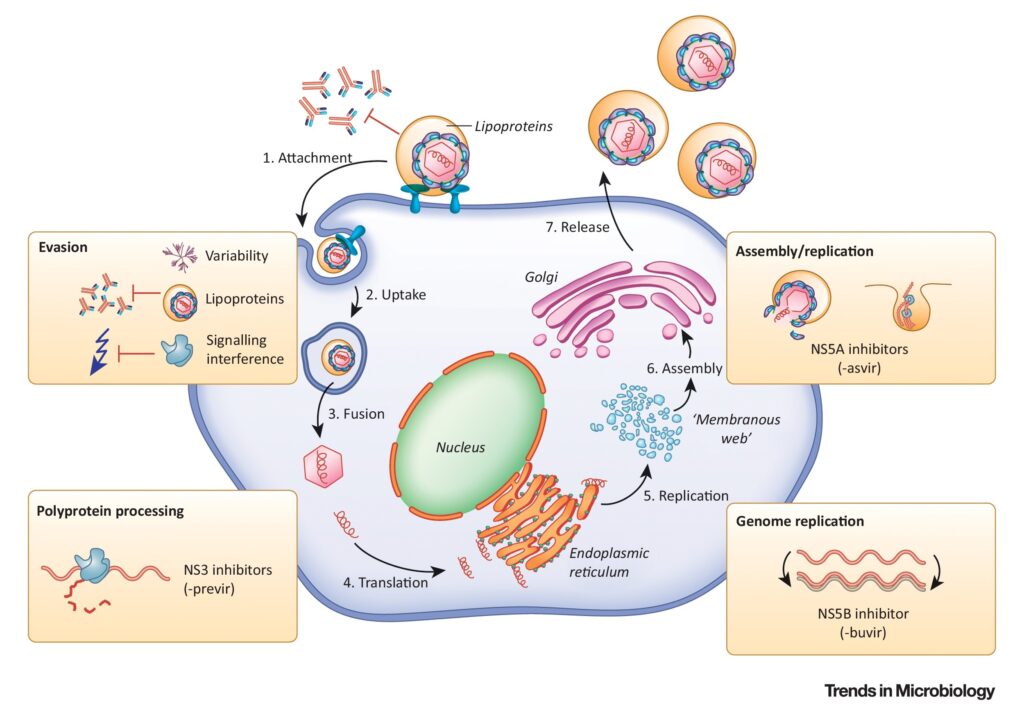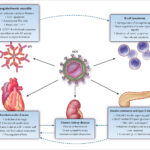Hepatitis C is a viral infection that primarily affects the liver, leading to inflammation, fibrosis, and in some cases, liver cirrhosis or liver cancer. While the virus has a global reach, its impact varies depending on genetic factors, including the viral genotype. Among the various genotypes of hepatitis C, genotype 6 is one of the less commonly encountered but still significant in certain parts of the world. In this article, we explore chronic hepatitis C genotype 6, its characteristics, implications, and the latest advancements in treatment options.

What is Chronic Hepatitis C – Genotype 6?
Hepatitis C is caused by the hepatitis C virus (HCV), which is classified into multiple genotypes. These genotypes are further divided into subtypes, with genotype 6 being one of the rarer forms. Genotype 6 is most prevalent in Southeast Asia, particularly in countries like Vietnam, Thailand, and Cambodia. It is also found in pockets of the global population with connections to these regions.
Chronic hepatitis C refers to the long-term persistence of the HCV infection in the body, lasting six months or more. While many individuals with chronic hepatitis C may not experience symptoms initially, the virus can cause serious damage to the liver over time, potentially leading to liver cirrhosis, liver failure, or hepatocellular carcinoma (liver cancer).
Genotype 6 and Its Unique Characteristics
Genetic Composition and Variability
Each genotype of HCV has a unique genetic structure, with slight variations that may impact how the virus behaves and responds to treatment. Genotype 6 has distinct characteristics compared to other genotypes like 1, 2, 3, or 4. Understanding the genetic makeup of genotype 6 is crucial for determining the best treatment options and predicting treatment outcomes.
Regional Prevalence and Risk Factors
As mentioned, genotype 6 is most commonly found in Southeast Asia, but it can also be seen in immigrant populations from these areas. The prevalence of genotype 6 is higher in regions where intravenous drug use, unscreened blood transfusions, and other high-risk behaviors are more common. Additionally, individuals with genotype 6 may face an increased risk of co-infection with other diseases like HIV, further complicating the treatment and management of the condition.
Symptoms of Chronic Hepatitis C – Genotype 6
Chronic hepatitis C often progresses silently, with many individuals unaware of their infection until significant liver damage has occurred. For those with genotype 6, the progression and symptoms are similar to other genotypes, although certain factors such as viral load and co-infections may affect symptom severity.
Common Symptoms Include:
- Fatigue and weakness
- Abdominal pain, particularly in the upper right quadrant
- Jaundice (yellowing of the skin and eyes)
- Dark urine and pale stool
- Loss of appetite and unexplained weight loss
- Nausea and vomiting
- Swelling in the abdomen or legs due to fluid retention (ascites or edema)
However, it’s important to note that many individuals may remain asymptomatic for years, only discovering their infection after routine blood tests.
Diagnosing Hepatitis C Genotype 6
A proper diagnosis of chronic hepatitis C is essential for effective treatment. The diagnosis involves several steps, including a blood test to detect HCV antibodies and confirm the presence of the virus. Once HCV infection is confirmed, further testing is required to determine the specific genotype and subtype of the virus.
Key Diagnostic Tools:
- HCV RNA Test: Measures the amount of the virus in the blood, confirming active infection.
- Genotype Testing: Identifies the HCV genotype and subtype (such as genotype 6).
- Liver Function Tests: Assess the extent of liver damage by measuring enzymes and other markers in the blood.
- Liver Biopsy or Imaging: Evaluates the degree of liver inflammation or fibrosis.
Genotype testing plays a crucial role in guiding treatment decisions, as the response to antiviral medications can vary between genotypes.
Treatment Options for Chronic Hepatitis C – Genotype 6
Over the years, the treatment of hepatitis C has advanced significantly, moving from injectable interferon-based therapies to direct-acting antivirals (DAAs) that offer higher cure rates and fewer side effects. Genotype 6 is no exception, with several treatment options available that are effective in eliminating the virus.
Direct-Acting Antivirals (DAAs)
DAAs are the backbone of modern hepatitis C treatment, offering a high rate of sustained virologic response (SVR), meaning the virus remains undetectable in the blood for at least six months after treatment. For genotype 6, several DAAs have shown excellent results, including combinations of drugs such as:
- Sofosbuvir and Velpatasvir
- Glecaprevir and Pibrentasvir
- Elbasvir and Grazoprevir
These medications target specific steps in the HCV life cycle, preventing the virus from replicating and allowing the immune system to clear the infection.
Treatment Duration
The duration of treatment for genotype 6 hepatitis C typically ranges from 8 to 12 weeks, depending on the individual’s viral load, liver health, and whether they have any co-infections such as HIV. Most patients with genotype 6 achieve a cure after completing their prescribed treatment regimen.
Personalized Treatment Approaches
Treatment regimens may vary depending on factors such as previous treatment history, liver damage, and co-existing medical conditions. For example, individuals with liver cirrhosis or severe liver fibrosis may require more intensive treatment protocols.
Managing Chronic Hepatitis C – Genotype 6
In addition to antiviral therapy, managing chronic hepatitis C involves addressing lifestyle factors that can help reduce the strain on the liver and improve overall health.
Lifestyle Changes and Supportive Care
- Avoid Alcohol: Alcohol accelerates liver damage, particularly in those with hepatitis C.
- Dietary Adjustments: A balanced diet rich in fruits, vegetables, and lean proteins can help maintain liver health.
- Regular Monitoring: Regular check-ups with a healthcare provider are essential to monitor liver function and adjust treatment plans as needed.
- Vaccination: Hepatitis A and B vaccinations are recommended for individuals with chronic hepatitis C, as co-infection can complicate liver disease.
Emotional and Mental Health Support
Living with chronic hepatitis C can be emotionally challenging. Support from healthcare providers, family, and support groups is vital for managing the psychological impact of the disease.
The Future of Hepatitis C – Genotype 6
Ongoing research continues to advance our understanding of hepatitis C, including genotype 6. New antiviral medications and combination therapies are in development, and personalized medicine may provide even more effective solutions tailored to individual patients. Additionally, public health initiatives focused on early detection, prevention, and education are crucial in reducing the global burden of hepatitis C.

